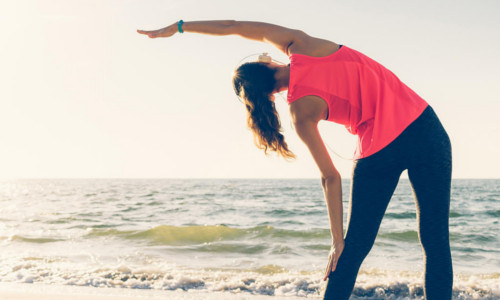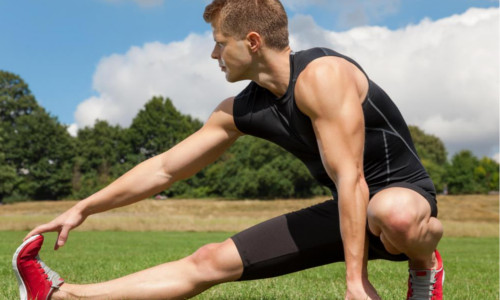Static vs. Dynamic Stretching: Which is Best for Runners?
Author

A keen runner, skier and nuts about cycling. Karl lives in Cumbria, where he loves encouraging his two children to follow in his outdoor lifestyle. Whilst out and about keeping active, Karl keeps a diary and shares it with Outdoor Look.
 I started running as a pastime and after reaping rewards in the form of increased stamina and a lithe body became addicted to it. While I was running, I did not pay any attention to stretching exercises and started getting injured frequently. Some days upon waking up I felt soreness in my back and on other days I felt my knee joints hurting. After the repeated occurrence of physical ailments, I went to a physician who told me about stretching. From that day onwards, I made stretching a habit. I learned from other experienced runners about different types of stretching exercises. After years of practice, I can truly say that I have developed into a know-it-all when it comes to stretching. There are many facets of stretching, however, we can broadly classify into static and dynamic stretching.
I started running as a pastime and after reaping rewards in the form of increased stamina and a lithe body became addicted to it. While I was running, I did not pay any attention to stretching exercises and started getting injured frequently. Some days upon waking up I felt soreness in my back and on other days I felt my knee joints hurting. After the repeated occurrence of physical ailments, I went to a physician who told me about stretching. From that day onwards, I made stretching a habit. I learned from other experienced runners about different types of stretching exercises. After years of practice, I can truly say that I have developed into a know-it-all when it comes to stretching. There are many facets of stretching, however, we can broadly classify into static and dynamic stretching.
To gain a better understanding of this discipline, a person should know the difference between these two types of stretching exercises. Let us have a look at dynamic stretching first.
Dynamic Stretching
As the name implies, dynamic stretching is the act of stretching in motion. It is done before starting a run and is known to put muscles through a wide range of motions. Dynamic stretching should be done before starting a run to make sure that your body is prepared to stand the toil of a grueling running session.
Different types of dynamic stretching exercises are:
Quad Stretch: Hold your ankle and while holding it, pull your heel up. Switch legs every few seconds and complete 8-10 stretches per leg. You can do this while standing or moving forward.
Hip Flexor: Pull one of your legs upwards and hold it in front of your chest. Count a few seconds and then drop it and do the same with your other leg. You should aim to do this about 10 or 12 times to get the most out of it.
Hamstring Stretch: Hamstring injury is the most common injury that a runner can suffer. Perform a hamstring stretch by leaning forward and letting one leg rise naturally. In this posture, stabilize yourself by touching the ground using your fingertips. Do not to lock your knees or push too hard for a deeper stretch. Perform a light stretch with fluid motion. Hold the pose for a second on each leg, at least 8-10 times.
Static Stretching
 Static stretching exercises are the ones which are done while holding still. Static stretching is best performed after a run as it helps muscles recover fast.
Static stretching exercises are the ones which are done while holding still. Static stretching is best performed after a run as it helps muscles recover fast.
A few examples of static stretching are listed below:
Cross-Legged Toe Touch: This exercise seems easy but can be quite challenging for beginners. For doing this exercise, you should cross your legs and reach for your toes. Touch the toes and it will count as one touch. Switch the way your legs are crossed and perform the toe touch again. Crossing your legs allows you to get a deeper stretch, every single time.
High Lunge: Get into a lunge position. Place your front foot outside of your arm. This position will help you in opening your hips, which are generally found to be tight on runners.
Static Calf and Hamstring Stretch: This is my favorite static stretching exercise. To do this, rest on one knee and straighten your other leg in front of you. This should be done with your heel touching the ground. Now, touch your fingertips to the ground for balance. If your knee has a slight bend, it is considered to be alright.
Static exercises are all about holding the pose. Hold the posture for as long as possible without overtly exerting yourself for best results.
Author

A keen runner, skier and nuts about cycling. Karl lives in Cumbria, where he loves encouraging his two children to follow in his outdoor lifestyle. Whilst out and about keeping active, Karl keeps a diary and shares it with Outdoor Look.
Categories
- Sport (28)
- Product Reviews (3)
- Team Outdoor Look (7)
- Mike Wild (2)
- Mike Payton (2)
- Suse Hammond-Pears (3)
- Snowboarding (12)
- Latest Offers (105)
- Shop Talk (1)
- Competitions (7)
- Walking (413)
- Lifestyle Fashion (8)
- Travel (86)
- Kit Guides (176)
- Workwear Clothing (6)
- Safety Workwear (4)
- Health/Fitness (289)
- Skiing (91)
- Great Outdoors (1316)
- Cycling (92)
- January 2025
- December 2024
- November 2024
- October 2024
- September 2024
- August 2024
- July 2024
- June 2024
- May 2024
- April 2024
- March 2024
- February 2024
- January 2024
- December 2023
- November 2023
- October 2023
- September 2023
- August 2023
- July 2023
- June 2023
- May 2023
- April 2023
- March 2023
- February 2023
- January 2023
- December 2022
- November 2022
- October 2022
- September 2022
- August 2022
- July 2022
- June 2022
- May 2022
- April 2022
- March 2022
- February 2022
- January 2022
- December 2021
- November 2021
- October 2021
- September 2021
- August 2021
- July 2021
- June 2021
- May 2021
- April 2021
- March 2021
- February 2021
- January 2021
- December 2020
- November 2020
- October 2020
- September 2020
- August 2020
- July 2020
- June 2020
- May 2020
- April 2020
- March 2020
- February 2020
- January 2020
- December 2019
- November 2019
- October 2019
- September 2019
- August 2019
- July 2019
- June 2019
- May 2019
- April 2019
- March 2019
- February 2019
- January 2019
- December 2018
- November 2018
- October 2018
- September 2018
- August 2018
- July 2018
- June 2018
- May 2018
- April 2018
- March 2018
- February 2018
- January 2018
- December 2017
- November 2017
- October 2017
- September 2017
- August 2017
- July 2017
- June 2017
- May 2017
- April 2017
- March 2017
- February 2017
- January 2017
- December 2016
- November 2016
- October 2016
- September 2016
- August 2016
- July 2016
- June 2016
- May 2016
- April 2016
- March 2016
- February 2016
- January 2016
- December 2015
- November 2015
- October 2015
- September 2015
- August 2015
- July 2015
- June 2015
- May 2015
- April 2015
- March 2015
- February 2015
- January 2015
- December 2014
- November 2014
- October 2014
- September 2014
- August 2014
- July 2014
- June 2014
- May 2014
- April 2014
- March 2014
- February 2014
- January 2014
- December 2013
- November 2013
- October 2013
- September 2013
- August 2013
- July 2013
- June 2013
- May 2013
- April 2013
- March 2013
- February 2013
- January 2013
- December 2012
- November 2012
- October 2012
- September 2012
- August 2012
- July 2012
- June 2012
- May 2012
- April 2012
- March 2012
- February 2012
- January 2012
- December 2011
- November 2011
- October 2011
- September 2011
- August 2011
- May 2010
- April 2010
- March 2010
- February 2010
- January 2010
- November 2009
- October 2009
- September 2009
Submit a Comment